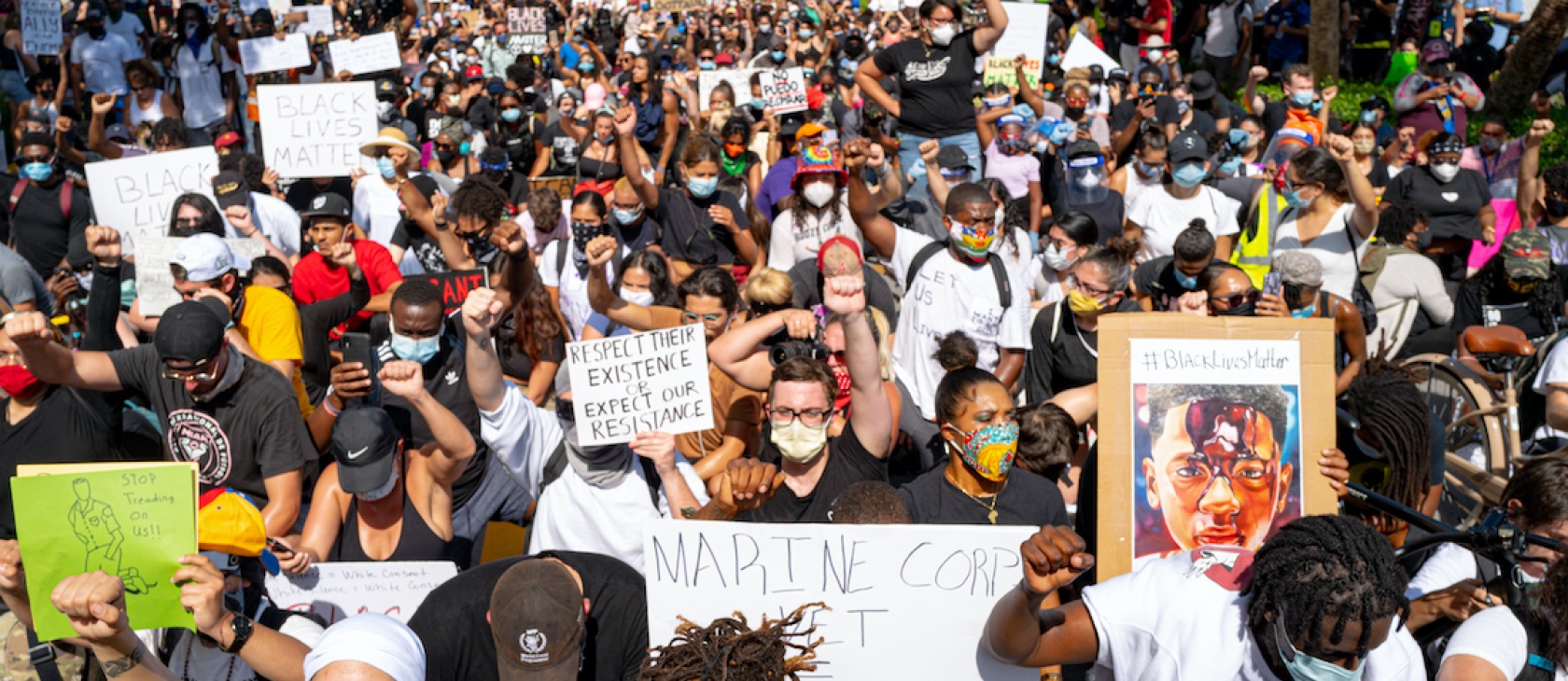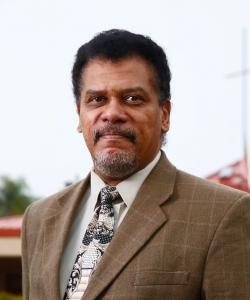We must assess three issues surrounding the Black Lives Movement (BLM) if we are to understand and respond to it. These are the proposition, the organization, and the movement itself.
One must strain to find anything objectionable with the proposition that “black lives matter.” It ought to be obvious that the lives of blacks matter, because blacks are human beings made in the image and likeness of God. They matter because they are human, just as the members of every other human racial group matter. In effect, race itself is a social construct that magnifies certain biological differences but cannot create a break in nature. Humans remain humans regardless of divisions that have been created over the course of history. Blacks are among the natural sons and daughters of God, with an ineradicable intrinsic dignity. The intrinsic dignity of blacks is a truth based on the general idea of human worth.
At certain times, emphasizing one subset of humanity might assist us in addressing practical realities. A good example is when we say that the unborn matter. That statement is not exclusive, as if to imply that people who have been born are not important. Some situations demand specificity.
Still, we might ask if an otherwise unobjectionable proposition like “Black Lives Matter” can be misused. One possibility is that one means to say that only blacks matter. One might betray this by trying to prevent others from focusing on other subgroups, by demanding that everyone focus only on one’s own agenda. For example, attacking those who say “Blue Lives Matter” as more police officers are killed or attacked in the line of duty would seem to imply opposition to highlighting the problems of any other group. When one group wants to fill all of the air in the public square, especially in a pluralistic society, we must be careful about the agenda that might lie behind it. In short, the proposition “Black Lives Matter” is unobjectionable and true, but it can be misused.
When we move from the proposition to the BLM organization, however, things get more complicated. The organization has loaded the phrase with its own ideology. Historically, BLM created its slogan within the ideological context of Marxism-Leninism. Its origin expressed this basic ideological framework through its focus on race, gender, and economic issues as understood by radical progressive politics. It was not human dignity, the natural law, special Christian revelation, Christian anthropology, or basic historic understandings of justice that gave rise to the slogan. It was the plight of blacks filtered through the prism of a detrimental secular ideology that motivated the creation of a social media campaign.
The movement gave rise to an organization from within a radical ideological understanding of oppression. In the hands of that group, the proposition, now a slogan, became instrumental to their ideological goals and a way of framing the question of black life in America: Blacks are the perennial victims of America. Black life is enclosed within the construct of systemic racism, which is in essence a revolutionary system of thought, not a reformist one. Blacks are said to be victims of the systemic nature of a society that is fundamentally racist, whose inherent purpose is to perpetuate white supremacy and black exclusion, which results in discrimination against minorities – even if none of its policies or institutions are explicitly racist. Eliminating overt systemic discrimination, in this view, does not make a dent in a system that is by definition racist. There is no compromise with that system, even if, for tactical reasons, reform might momentarily serve their purposes.
If one is not in alignment with that ideological understanding of black life in America and with the goals necessarily resulting from such understanding, it is reasonable to ask what the organization is doing with an otherwise fine proposition. After all, as noted, propositions converted into slogans can be misused, especially as they can reflect deeper ideological suppositions. A proposition can be correct but become negative when it is weaponized to serve an ideology.
How can we know? Its founders are open about the origins, history, mission, vision, and goals of the Black Lives Matter organization. One is hardly expressing prejudice or defaming the group by taking their assertions as accurate representations of their views. In doing so, we can offer an objective assessment of the organization, and those of us who reject Marxism and Leninism can confidently assess – and reject – the organization.
That brings us to the movement itself. Movements tend to have a center and a periphery. The center is without a doubt the BLM organization and its aims. We know this, because the organization that created the slogan and generated the movement still reaps enormous financial benefits, conducts and channels the movement’s activities, and perpetuates a narrative through the movement. BLM began in rage at what it calls “rampant and deliberate violence inflicted on us by the state.” BLM describes its origins this way: “In 2013, three radical [b]lack organizers – Alicia Garza, Patrisse Cullors, and Opal Tometi – created a [b]lack-centered political will and movement building project called #BlackLivesMatter. It was in response to the acquittal of Trayvon Martin’s murderer, George Zimmerman.” The radical movement became an organization and then a “united front.”
On the periphery of this movement, there are multitudes of people allured by the truth of the proposition. However, this proposition is not a free-floating examination of anthropological realities or a general affirmation of dignity seeking systematic (rather than systemic) reform. It is a proposition converted into an instrument. Those on the periphery are being influenced by and unwittingly cooperating with the organization at the movement’s center.
It is reasonable to expect that people who defend the proposition but do not accept BLM’s ideology would try to detach the movement from its center. However, this is an impossible task. The gravitational pull of ideological movements is quite powerful, and everything that challenges the center is expelled. Those who openly reject the center are denounced and said to oppose their goal of “justice.” Once one is within the whirlwind of that hurricane, it is impossible to leave.
Many people of goodwill join movements out of desire to “do something.” Once a movement starts, however, it is difficult to resist its luring enticements, especially when the system becomes a parasite living off of genuine historical wrongs. It camouflages its true colors by looking like another necessary step on the long American journey for racial justice. This camouflage works, despite the founders of the movement telling us their ideology, because people long for the promised justice and hope to isolate the center from its periphery. But this is impossible.
This is complicated by what we know of Black Lives Matter’s ideology and the Leninist concept of its united front. We can find the idea in Marx but the “united front” emerges fully with Lenin and his theory of imperialism as the highest stage of capitalism. Once Russia outlawed the Communist Party and Lenin had to go into exile, the Bolsheviks chose to utilize broader movements and causes to advance their revolution, abandoning the idea that such alignments polluted the cause. In his work Two Tactics, Lenin rejected the Menshevik call for extreme revolutionary opposition by the proletariat through its vanguard and proposed to “march side by side with liberal and monarchist bourgeoisie without merging with either.” Lenin decried the refusal of Communists to participate in elections, to join larger causes to advance revolution, and to create movements around certain problems that could bring fellow travelers alongside the proletariat. Lenin called the Communist refusal to compromise with the bourgeois parties “childish” and said movements designed to be used for tactical efforts were an essential part of the Communists’ ultimate victory.
History shows that fronts in the countries experiencing “colonialism” or “imperialist oppression” kept widening to include more and more non-Marxist sectors. The Communists grew whenever they properly employed deceptive “united front” tactics with other movements. They gained mainstream status and acceptance and were looked upon as the most active unifiers of those fighting injustice. The BLM movement has all the elements of a sophisticated united front.
Taking into consideration these three aspects, one who desires to proclaim the truth and do justice but without becoming a tool of political extremists who cunningly manipulate people must seriously pause before embracing the BLM movement. The best attitude is one of healthy skepticism toward the BLM movement. The best way to affirm the truth of the proposition that “black lives matter” is instead committing to get involved with non-ideologically motivated organizations that are accomplishing positive results within the black community.
It is also important that we understand the issues at hand and learn of the competing forces within the civil rights movement, which created two diametrically opposed understandings of black reality in America – one integrationist, personalist, and reformist; and the other separationist, dialectical, and revolutionary. The early civil rights movement was not infected with the seeds of dialectical materialism as its interpretive model of black reality. The movement was imbued with a reformist embrace of the American ethos and a natural law understanding of the human person and the social order. Early in the movement, Martin Luther King Jr. approached the microphone of Holy Street Church in Montgomery, Alabama, to proclaim black dignity and demand a generational change. “When the history books are written in future generations,” he declared, “the historians will have to pause and say, ‘There lived a great people – a black people – who injected new meaning and dignity into the veins of civilization. This is our challenge and our overwhelming responsibility.” This generation must not betray these honorable aims.




